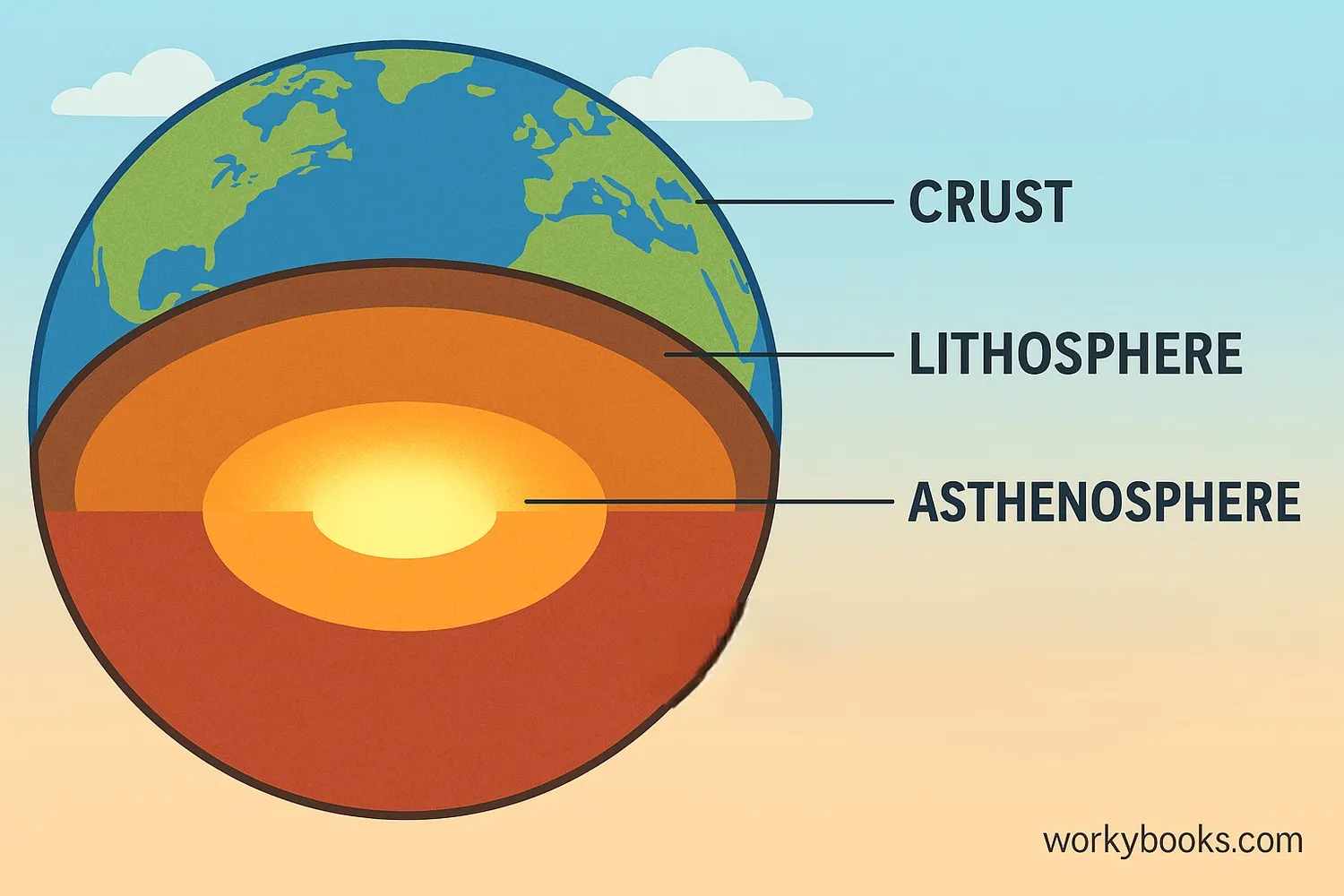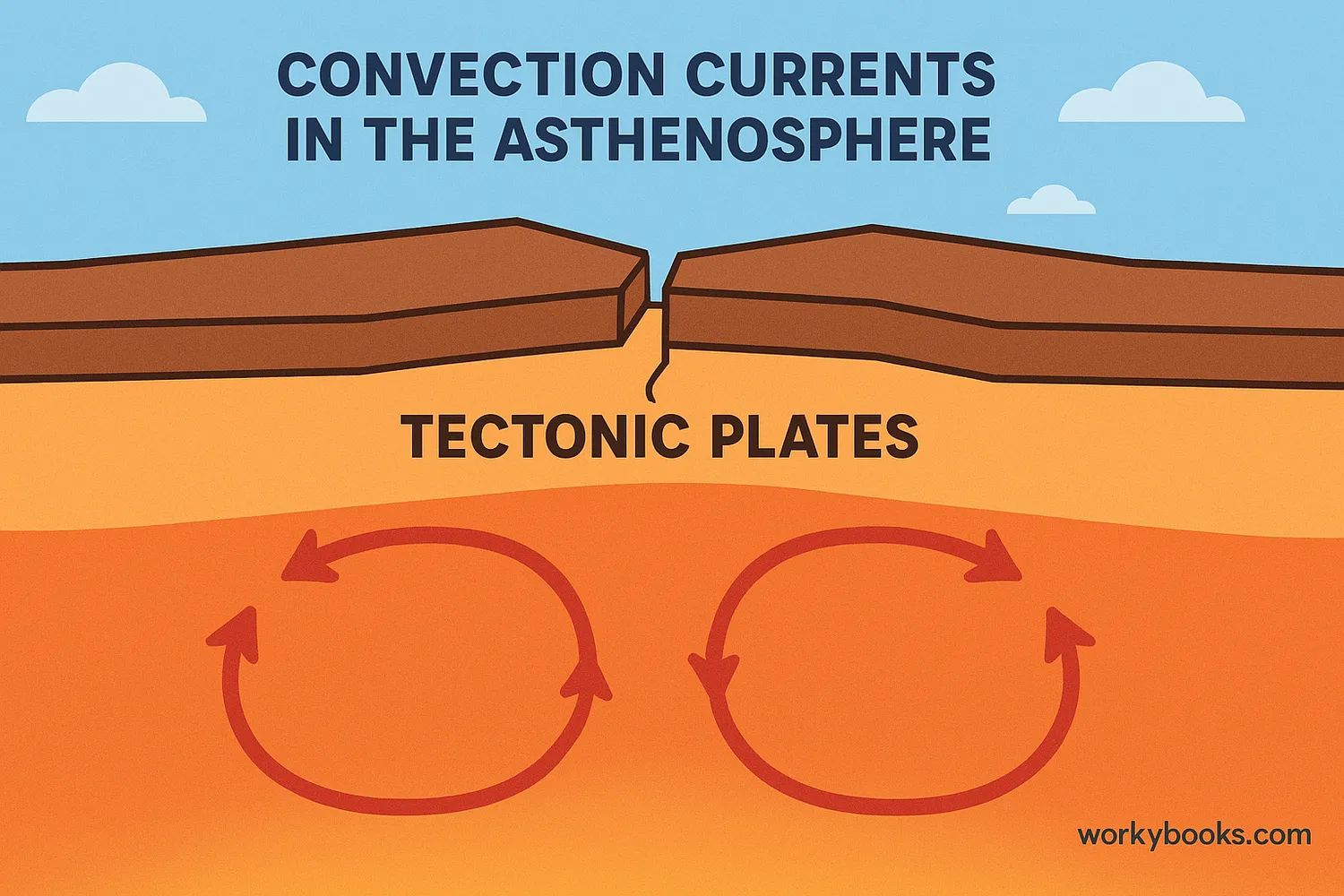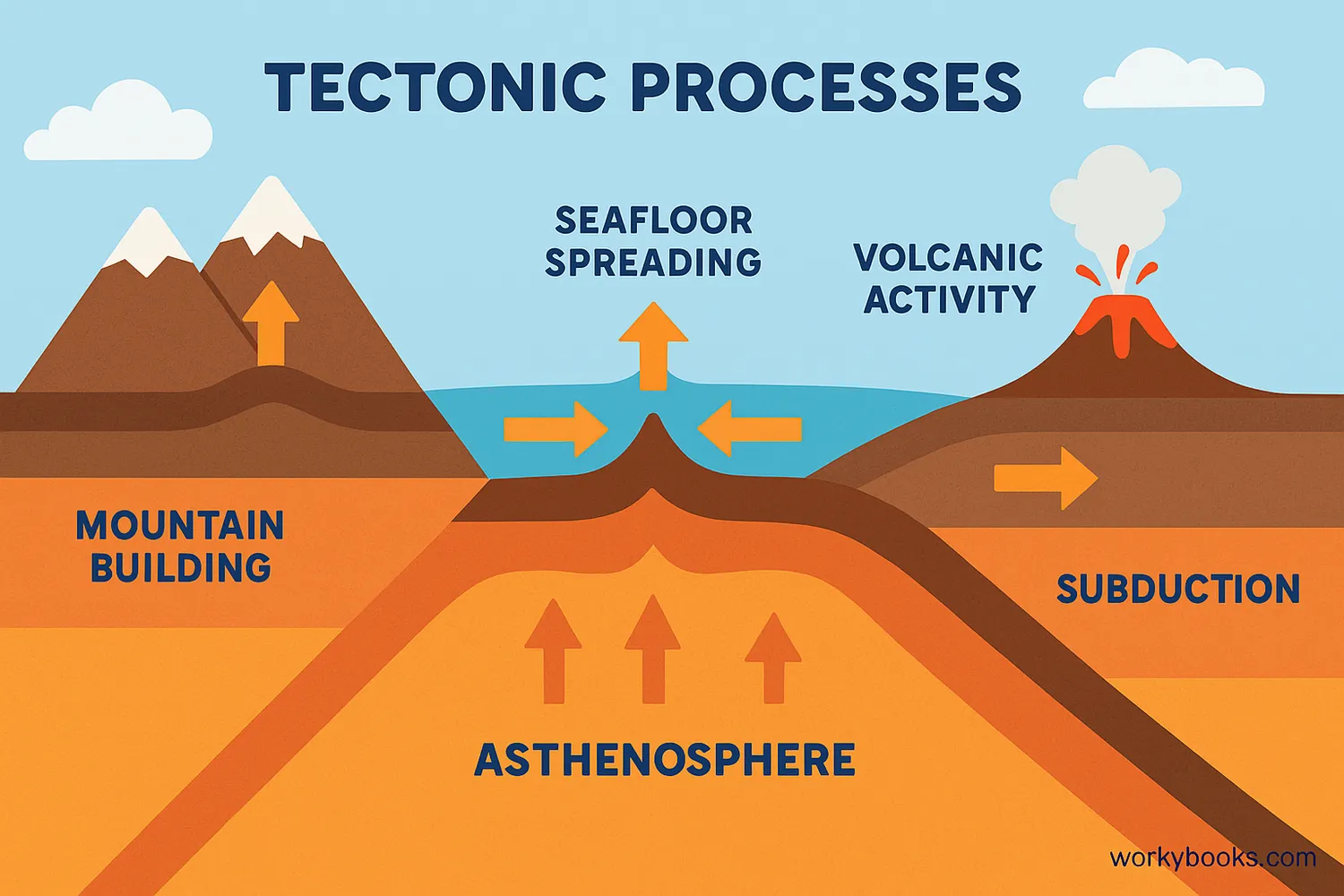The Asthenosphere - Definition, Examples, Quiz, FAQ, Trivia
Discover Earth's mysterious layer that powers tectonic plate movement
What is the Asthenosphere?

The asthenosphere is a special layer in Earth's upper mantle located between about 80 and 200 kilometers (50-120 miles) below the surface. The name comes from Greek words meaning "weak sphere" because this layer is partially molten and can flow slowly over time.
Think of the asthenosphere as a soft, bendable layer beneath Earth's rigid outer shell. It's not liquid like water, but more like soft plastic or warm putty that can slowly move and change shape. This special property allows the tectonic plates above it to move around, which causes continents to drift, mountains to form, and earthquakes to happen.
Did You Know?
The asthenosphere was discovered by studying how seismic waves from earthquakes slow down when passing through this layer, indicating it's partially molten!
How the Asthenosphere Works

The asthenosphere works through an amazing process called convection currents. Here's how it powers the movement of Earth's tectonic plates:
Heat from Below
Heat from Earth's core rises into the asthenosphere
Material Rises
Warm rock becomes less dense and slowly rises
Material Spreads
The rising material spreads out horizontally
Cooling & Sinking
Material cools, becomes denser, and sinks back down
Plate Movement
These currents drag tectonic plates along with them
This continuous cycle creates massive conveyor belts of moving rock that slowly but powerfully push and pull the tectonic plates above. The movement is extremely slow—only a few centimeters per year (about the speed your fingernails grow)—but over millions of years, this movement can move continents thousands of kilometers!
Science Connection
The asthenosphere's ability to flow is called plasticity. This property allows solid rock to behave like a fluid over long periods of time due to intense heat and pressure.
Why the Asthenosphere is Important

The asthenosphere is essential for many of Earth's most important geological processes:
Plate Tectonics
Provides the lubricated layer that allows tectonic plates to move
Seafloor Spreading
Drives the creation of new oceanic crust at mid-ocean ridges
Continental Drift
Powers the movement of continents over geological time
Without the asthenosphere, Earth would be a very different planet:
• No moving continents or continental drift
• No mountain building from plate collisions
• Reduced volcanic and earthquake activity
• No recycling of Earth's crust through subduction
The asthenosphere also helps regulate Earth's internal heat by allowing convection currents to transfer heat from the deep interior toward the surface. This process helps maintain Earth's magnetic field and geological activity that makes our planet habitable.
Asthenosphere Knowledge Check
Test your understanding of the asthenosphere with these questions. Answer all 5 questions to see how much you've learned.
Frequently Asked Questions
Here are answers to some common questions about the asthenosphere:
Earth Science Facts
Discover some amazing facts about Earth's interior and the asthenosphere!
Mysterious Layer
The asthenosphere wasn't discovered until 1926 by seismologist Beno Gutenberg, who noticed that seismic waves slowed down in this layer, indicating it was partially molten.
Slow Motion
Convection currents in the asthenosphere move at about the same speed your fingernails grow—just 2-5 centimeters per year. But over millions of years, this can move continents thousands of kilometers!
Volcano Connection
Some volcanoes, like those in Hawaii, are created by "hot spots" where plumes of extra-hot material rise through the asthenosphere and melt through the lithosphere to create volcanoes.
Planetary Comparison
Earth is the only planet in our solar system with a well-developed asthenosphere. This is one reason why Earth has active plate tectonics while other planets like Mars and Venus do not.


